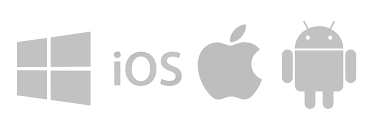Fully embracing modern web technologies, the new ImageView Viewer offers a fresh, responsive,...
Adopting updated applications: Can it be too early?
With the arrival of next generation Xbox and Playstation consoles this month, despite all the hype, is there a downside to jumping straight onto the newest platforms? Is there a ‘right’ time?
Let us be clear, vendors would love every one of their licenced installs to be running the same release version on the same operating system, with the same patches and on the same hardware – it would make their lives simple when it came to development, testing and implementation. So many variables removed from the constantly moving target.

Apple gets close with their iOS / OSX platform only being developed for use on their own product lines which they strictly control the development of. This co-dependent type of development minimises the potential variance that will be experienced once the release is sent out for public consumption. Not to say there will not be issues but it is as controlled as they can feasibly make it.
BUT as discovered in the last few weeks by eager gamers who took delivery of their brand new Xbox and Playstation consoles, ‘closed’ development doesn’t guarantee success – new consoles have been freezing, resetting, ‘bricking’ (when the console becomes essentially unusable – a brick)… So what begins is a cycle of correction, users report issues, vendor programmers examine, collect the system data (supplied automatically these days across the internet), create a fix and release a patch. This cycle will continue throughout a product lifecycle but as a rule the first few months require the greatest changes to fix the most fundamental issues. Essentially the early adopters (like myself – PS5) will now pave the way over the next few months for the creation of a more stable platform which those that get a console early next year will benefit from having none of the issues experienced now.
For most vendors though they are not dealing with a closed or limited environment but a sea of Windows versions, service packs, virtual machine hosts, hardware vendors, memory levels… the list is long, really long. As a vendor you have to make choices, try to make the list smaller. In my youth with my first PC, I remember reading the side of the game box telling me I needed an Intel DX2 66 minimum processing speed with 4MB of memory and a 4Mb dedicated graphics card with MS DOS 6.2*. Vendors still make those stipulations, in recent times dropping any support for Microsoft Internet Explorer (still used by many businesses), Microsoft Windows 7 (still used by many businesses), Windows 2008 Server R2 (still used…) – you get the idea.
All of this creates a mix of conflicting priorities between vendor and customer within which there needs to be a balance. A new version of vendor software may have some fantastic new features, but unless there is a compelling argument for one of those new features to directly benefit the business, why upgrade? The version you have installed is running on the servers / workstations you have already and it is doing what you need it to do. Unless a vendor is physically going to pull the plug on something being able to function, most businesses will not prioritize and upgrade.
There are risks to clinging on to that older, embedded version, especially if it is running on older infrastructure. Should the hardware fail and a restore be required, vendors will often withhold any meaningful support to get running again or they simply cannot provide the older installers (no really, I know one vendor that doesn’t keep past the last two versions). Conversely the vendor might have the software but your IT team can no longer supply an old operating system that the software is supported on leaving you with a tricky task of having to upgrade and restore simultaneously.
Conversely as a reseller, we would probably never advise that a new major release version is adopted straight away, unless there is a desperate need for a function in that release, it sometimes pays to wait for that first service patch to arrive, let some other users take the initial pain. As a software developer we would always like you on our latest release, on the same OS version, using the same hardware…
As for the next gen console release, well it took this author 24 hours to transfer from a PlayStation 4 to a PlayStation 5 facilitated by a 1TB external drive – it should have taken less than an hour but a bug in the initial release software means the automated transfer feature (allowing a direct transfer between consoles) doesn’t work… I am sure there will be a patch soon for the later adopters!

Toby Gilbertson, Customer Services Manager. November 2020



